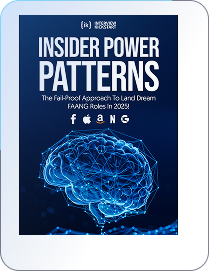Learning data structures and algorithms is fundamental for any software developer from any domain. These concepts form the backbone for most of the profiles in IT.
With the increase in job opportunities, the competition has also increased. Now, top-tech companies hire software engineers who are highly skilled and possess advanced knowledge of data structures and algorithms.
Mastering data structures such as arrays, linked lists, stacks, and trees, along with algorithms for sorting, searching, and traversing, enhances problem-solving skills and logical thinking.
Practicing MCQs on data structures and algorithms reinforces knowledge and problem-solving skills. These MCQs are crucial if you’re on a self-learning journey. You can assess your knowledge and see where you stand.
These MCQs on DSA cover basic operations and data structures, linear and non-linear data structures, queue operations, algorithm applications, and so on.
Overall, these questions aim to test and reinforce knowledge in various areas including the types and operations of data structures, algorithmic applications, and fundamental programming principles crucial for software developers.
We have brought you a collection of 40 data structure MCQs to strengthen your preparation. These algorithm interview questions are commonly asked in numerous top-tech FAANG companies’ interview processes.
Also Read: Top Data Structures and Algorithms Interview Questions
Data structure MCQs help you understand vast topics precisely and get yourself prepared enough to crack software engineer interviews in one go.
We have enlisted some coding interview questions with their answers that are commonly asked in top tech companies like FAANG+.
Answer: a. Operations that manipulate data in some manner
Answer: b. 9
Answer: d. An array of characters
Answer: b. Array
Answer: a. Single-ended queue
Answer: d. 3
Answer: d. Red-Black Trees
Answer: d. All of the above
Answer: d. Stack
Answer: c. Divide and Conquer
Answer: a. MAX – 1
Answer: a. -1
Answer: d. All of the above
Answer: d. Underflow
Answer: a. Allocating CPU to resources
Answer: a. Linux
Answer: c. Array
Answer: c. Rear > front
Answer: d. Establish a parent-child relationship between classes
Answer: c. Information hiding
Answer: c. Merge sort
Answer: b. Single-ended queue
Answer: b. Stack
int empty(Q*P)
{
if (P->R==-1)
return (1);
return (0);
}
int full(Q*P)
{
if (P<-R==MAX-1)
return (1);
return (0);
}
int empty(Q*P)
{
if (P<-R>==-1)
return (0);
return (1);
}
int full (Q*P)
{
if (P<-R==-1)
return (1);
return (0);
}
Answer: a.
int empty(Q*P)
{
if (P->R==-1)
return (1);
return (0);
}
Answer: d. ELSEIF
Answer: c. Fixed place on the system disk
Answer: a. Break but not continue
Answer: push_back()
Answer: c. –18
Answer: c. dequeue
def pops(stackname)
   return len(stackname)
Answer: a. Return the size of stack
Answer: c. Stack
Answer: a. Polish notation
Answer: b. Push
Answer: 3 2 1
Answer: d. Stack
Answer: a. Infix, binary
Answer: a. PUSH & POP
Answer: c. 6915
Answer: a. 21
Answer: All of the above
Mastering Data Structures and Algorithms (DSA) is crucial as they form the backbone of many job profiles in software development, data analysis, and more. Our Early Engineering Course is designed to give you a strong foundation in DSA, equipping you with the skills needed to excel in technical interviews and on the job.
Our instructors teach you Data Structures and Algorithms from sorting algorithms, recursion, Trees, Graphs, and more. These concepts are fundamental to other major job profiles as well. For instance, Back end engineering.
Aspiring Data Scientists also learn Data Structures and Algorithms from our Data Science course.
What is data structure suitable for?
Data structure is best for data retrieval, storage, processing, and organization.
Why create a data structure?
Data structure enables users to easily access and perform work within the data based on their requirements.
Who is the father of data structure and algorithm?
Donald Knuth from Stanford University is known as the father of data structure and algorithms.
What is an algorithm in data structure?
An algorithm refers to a procedure or list of instructions to conduct particular actions, solve problems, or perform a computation.
What is a flowchart in data structure?
A flowchart refers to a structure or diagram that determines a process, computer algorithm, or system. It is used to represent complex data in simpler form for a better understanding of the concept.
Related Articles:
Attend our free webinar to amp up your career and get the salary you deserve.

693+ FAANG insiders created a system so you don’t have to guess anymore!

100% Free — No credit card needed.

Time Zone:






Get your enrollment process started by registering for a Pre-enrollment Webinar with one of our Founders.

The 11 Neural “Power Patterns” For Solving Any FAANG Interview Problem 12.5X Faster Than 99.8% OF Applicants
The 2 “Magic Questions” That Reveal Whether You’re Good Enough To Receive A Lucrative Big Tech Offer
The “Instant Income Multiplier” That 2-3X’s Your Current Tech Salary

The 11 Neural “Power Patterns” For Solving Any FAANG Interview Problem 12.5X Faster Than 99.8% OF Applicants
The 2 “Magic Questions” That Reveal Whether You’re Good Enough To Receive A Lucrative Big Tech Offer
The “Instant Income Multiplier” That 2-3X’s Your Current Tech Salary
Just drop your name and email so we can send your Power Patterns PDF straight to your inbox. No Spam!
By sharing your contact details, you agree to our privacy policy.
Time Zone: Asia/Dhaka

We’ve sent the Power Patterns PDF to your inbox — it should arrive in the next 30 seconds.
📩 Can’t find it? Check your promotions or spam folder — and mark us as safe so you don’t miss future insights.
We’re hosting a private session where FAANG insiders walk through how they actually use these Power Patterns to crack interviews — and what sets top performers apart.
🎯 If you liked the PDF, you’ll love what we’re sharing next.
Time Zone:

